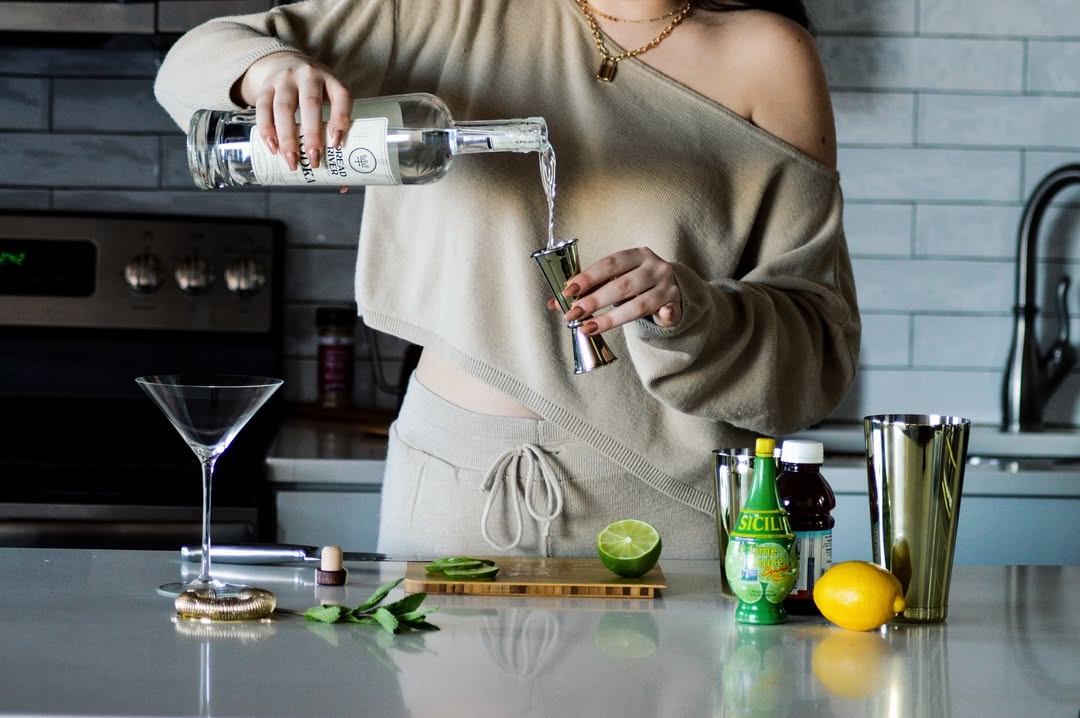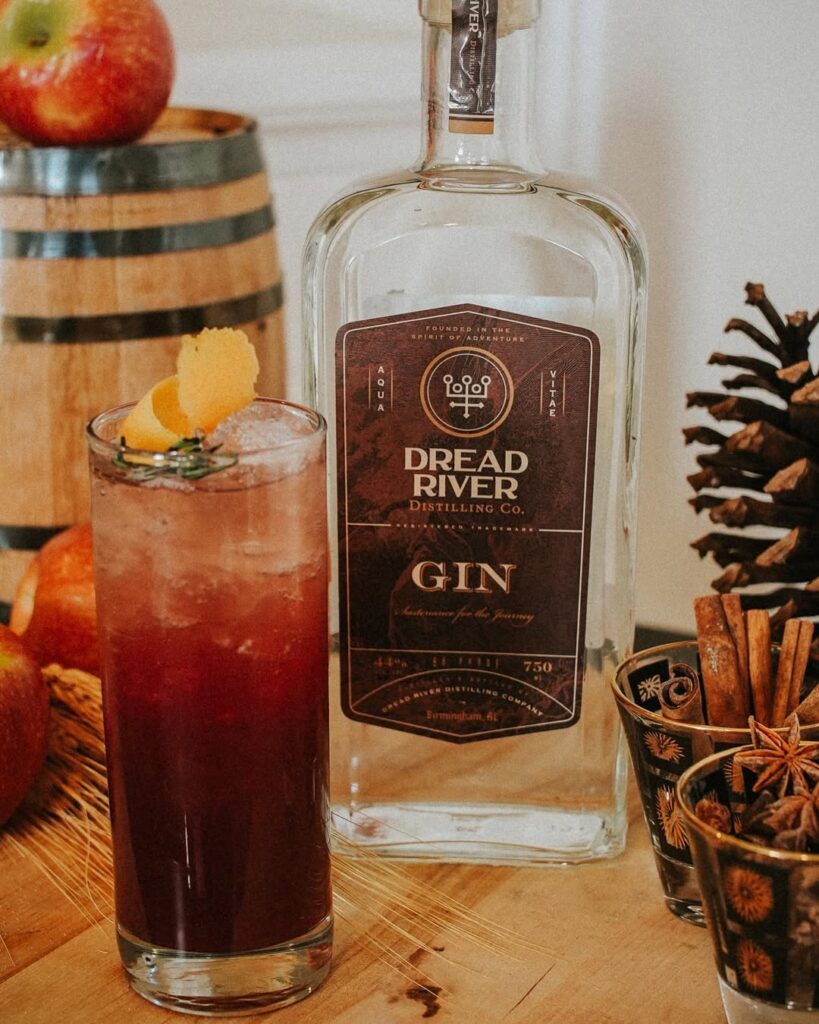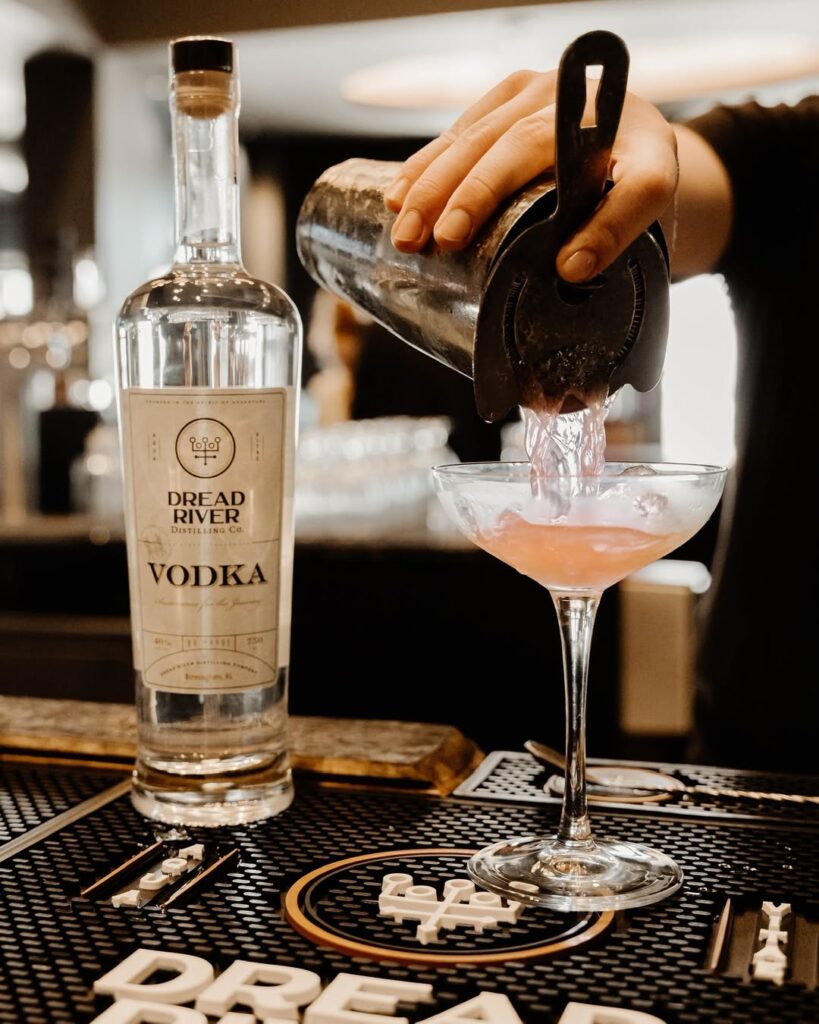Gin vs. Vodka: Key Differences & Which Cocktails Suit Each Spirit
October 14, 2025
Dread River

Call for a martini at any lively party, and the gin versus vodka debate sparks. Both sides are passionately devoted, and each tries to be the star of the glass. What makes these clear giants different?
At Dread River, we distill both gin and vodka, so the subtleties in each bottle are territory we know well: from the dark herbal richness of gin to the icy serenity of vodka, each is its own special journey defined by heritage and experimentation.
Come with us as we draw the map in this blog: discover their making up, crack the flavor DNA, and debunk myths around vodka vs gin strength. For the seasoned explorer, we’ll reveal four must-try gin cocktails and vodka serves that best highlight each spirit’s strengths.
Distillation & Base Materials: The Core Difference Between Gin and Vodka
Fundamentally, gin and vodka have the same starting point: a neutral spirit that is distilled from grains or other fermentable substrates. But the path from still to glass differs in remarkable ways.
Vodka is typically clean, smooth, and neutral. It is distilled multiple times and is sometimes charcoal filtered. It feels crisp on the tongue and stays quiet on the nose, so your mixers do the talking.
Gin starts with a vodka-like foundation and is then redistilled with juniper berries and other botanicals. This infuses layers of flavor: herbal, floral, citrus, or spicy, depending on the recipe. In contrast to vodka’s subtle nature, gin makes its presence known in aromatic depth and mouthfeel.
In the gin vs vodka debate, vodka blends effortlessly into drinks, while gin is meant to be noticed and add depth with each serve.
Botanical Symphony vs Neutral Canvas
Botanicals drive the difference between gin and vodka. You can smell it in the glass. Juniper always leads in quality gin. Juniper always leads in quality gin. By law, juniper must be the predominant flavor in gin; its piney, resinous profile defines the spirit. Meanwhile, vodka has no juniper flavor.
Supporting notes layered over juniper set gin apart. Notes like lemon zest, peppery coriander, spice, and floral tones enhance the flavor of the gin. Distillers balance lemon peel, coriander, and spice so each note shows up without crowding the rest. That lift is why classic and new gin drinks pop.
Vodka is the counterpoint: clean and neutral, built to let other flavors take center stage in a Cosmo, Mule, or highball. This is the fundamental difference between gin and vodka. One is layered, and the other lets its co-stars shine.
Read our blog for more cocktail recipes.
Proof & Regulations: Clearing Up Vodka vs Gin Strength
In the United States, both gin and vodka must be bottled at least 40% ABV (80 proof). In the European Union, the minimum for both is 37.5% ABV. Many gins are higher proof, and navy strength is typically about 57% ABV. Higher proof can carry aroma and texture. It helps juniper and citrus pop in gin. It can give vodka a silkier feel.
On the vodka side, some bottles go higher proof for specialty cocktails or infusions. Barrel-aged (or cask-rested) gin exists, but proofs vary. “Cask strength” describes spirits bottled near barrel proof and is not a standard gin category. That aging can add spice, vanilla, or oak while keeping juniper in frame.
Ethanol volatility intensifies both perfume and texture; it can elevate citrus peel and juniper in gin, or imbue even the driest vodka with a silken, weightless texture.
Flavor Profile Grid: Nose, Palate & Finish

Side-by-side tasting shows how vodka and gin define themselves in each sip. Even with the same foundation, their characters could not be more different.
Aroma: Vodka’s aroma is muted. You may notice light grain and an underlying citrus note. Gin, on the other hand, is identified by juniper up front, with supporting notes such as citrus peel, cardamom, and other botanicals.
Palate: Vodka drinks smooth and creamy with a quick peppery kick. Gin brings spice, herbs, and flowers, so the sip stays lively.
Finish: Vodka ends fast and clean. Gin lingers a bit longer, with juniper and other notes hanging for a moment before they fade.
This side-by-side sensory grid shows the difference between gin and vodka. Vodka often plays a quiet background. Gin colors the picture with bold flavor and aroma.
Both have a purpose. Use vodka for simplicity. Use gin for nuance.
When to Pour Which: Cocktail Decision Tree

Select your spirit by the flavor landscape you want to explore, like a veteran explorer choosing a compass.
Base Flavor Objective: Bright & Botanical?
Reach for a gin and make a gin cocktail where botanicals lift citrus, green herbs, and spice. Gin’s aromatic depth powers timeless gin cocktails, from the snap of a Gimlet to the garden-fresh pull of a Southside.
Craving ultra-crisp, mixer-balanced refreshment?
Vodka is your reliable partner. Its neutral, clean slate lets bold juices and fizzy sodas shine, creating cocktails that embody pure refreshment. That balance is a hallmark in the gin vs vodka conversation.
Looking for a higher-proof spine?
Choose overproof gin. It delivers bigger aromatics and a fuller body. Ideal for adventurous tastes that seek depth without losing brightness.
Let your flavor goal guide you, and watch each pour create a new journey in your glass
Signature Serves: 3-Ingredient Stars
Great cocktails require no lengthy ingredient lists, merely big flavors and a dash of creativity. These Dread River recipes will show you that with only three ingredients, you can create something remarkable.
- Garden Gimlet: A new take on an oldie. Mix Dread River Gin with lime cordial over ice, stir, and top with a fresh basil leaf. The effect is crisp, aromatic, and herb-tinged. A great pick for lovers of gin cocktails that marry brightness with botanicals.
- Berry Breeze Vodka Spritz: This light and refreshing serve is made with Dread River Vodka and berry kombucha, then topped with a splash of soda. When poured over ice and gently stirred, the fruity spritz becomes a fun, playful drink perfect for a summer day. This is a perfect cocktail to explore the difference between gin and vodka.
- Citrus Espresso “Vodka-tini”: To make an intense energizer, shake Dread River Vodka with cold brew and a few dashes of orange bitters. Strain into a chilled glass to create a cocktail that is half citrus shine, half coffee boldness. It’s a tasty way to explore vodka vs gin strength in flavor delivery.
- Lavender Collins: Gin collides with floral sophistication. Combine Dread River Gin and lavender syrup, then top with club soda over ice. This light, scented cooler is one of the standout gin cocktails, providing a soothing yet lively drink.
Learn more skills in our cocktail class.
Dread River Spotlight: Our Clear-Spirit Lineup
We distill clear spirits for adventurers who want to forge their own way. Our gin leans bright with juniper, coriander, and citrus. Our vodka stays clean and silky, so mixers can show off. Side by side, they show two clean paths to flavor, from a snap of botanicals to pure, crisp refreshment.
Bring a Dread River spirit home and make your own cocktails with ideas from this guide, then trust your palate to pick a favorite. When you are ready to stock the bar, explore our clear spirit lineup.